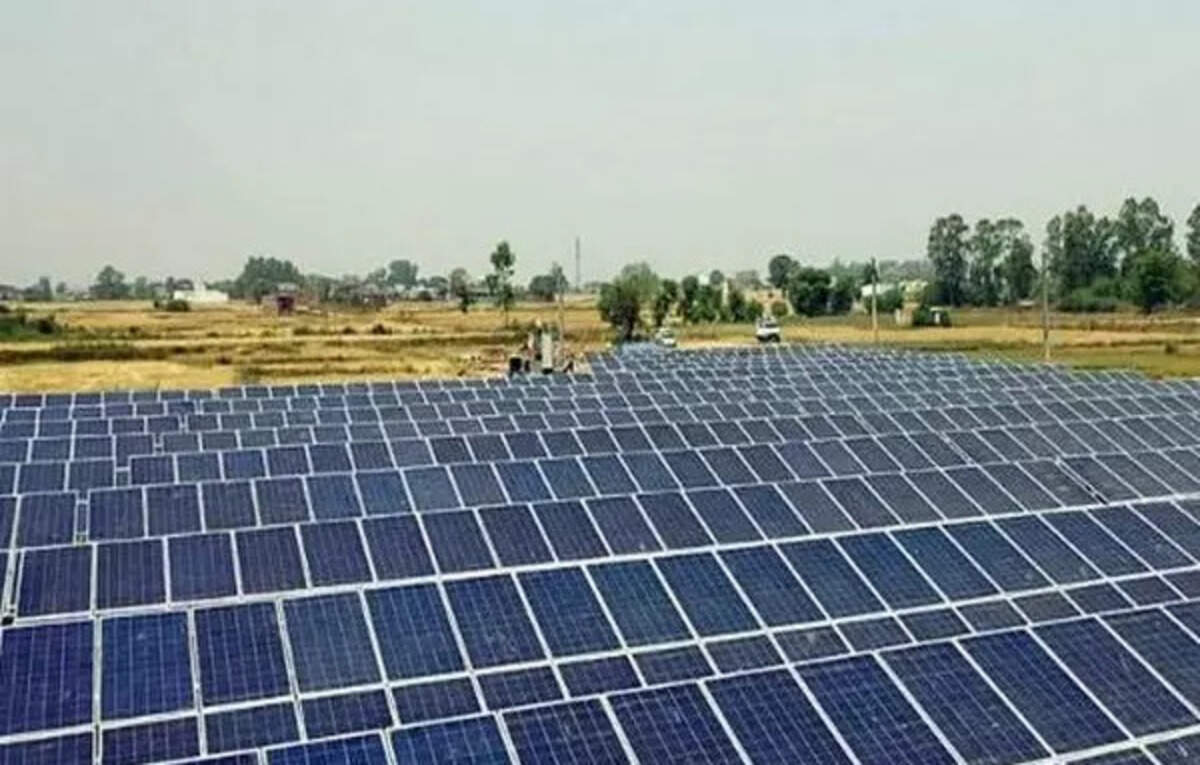US Slaps 3,521% Tariffs On Some Southeast Asian Solar Products: Impact Analysis

Table of Contents
Impact on the US Solar Industry
The immediate impact of the 3,521% tariff will be felt acutely by the US solar industry.
Increased Solar Panel Prices
The tariffs will almost certainly lead to a substantial increase in US solar prices. This increase will be passed down the supply chain, impacting residential, commercial, and utility-scale solar projects. Experts predict price hikes ranging from 15% to 30%, making solar energy less competitive compared to other energy sources. This rise in solar panel costs will directly affect the affordability and accessibility of solar energy for American consumers and businesses.
- Residential Projects: Increased costs will reduce the number of homeowners opting for solar installations, delaying the transition to clean energy.
- Commercial Projects: Higher installation costs could hinder businesses' ability to invest in renewable energy solutions, impacting their sustainability goals and potentially increasing operational expenses.
- Utility-Scale Projects: The increased costs could delay or cancel large-scale solar projects, impacting the overall growth of solar energy generation capacity within the US.
Slower Growth of Solar Energy Adoption
The increased solar panel costs will undoubtedly slow the growth of solar energy adoption in the US. The higher prices will reduce consumer demand, potentially jeopardizing the country's ambitious renewable energy goals. A decrease in installations translates to fewer jobs created in the solar installation and maintenance sectors. The effect on renewable energy growth will be substantial, potentially widening the gap between the nation's climate targets and actual progress.
- Decreased demand due to higher prices.
- Reduced investment in new solar projects.
- Potential delays in reaching renewable energy targets.
Shift in Supply Chains
US companies will likely seek alternative solar suppliers outside of Southeast Asia to mitigate the impact of the tariffs. This shift in solar supply chains has both advantages and disadvantages. While it could boost domestic solar manufacturing and reduce reliance on specific regions, it could also lead to increased logistical complexities, potentially higher costs from new suppliers, and disruptions in the global solar market.
- Exploration of alternative suppliers in other regions.
- Potential for increased costs and logistical challenges.
- Opportunities for domestic solar panel solar panel manufacturing growth.
Impact on Southeast Asian Solar Industries
The tariffs represent a significant blow to Southeast Asia solar exports and the economies of the affected countries.
Reduced Exports and Economic Losses
The 3,521% tariff will severely reduce the volume of solar products exported from Southeast Asia to the US, leading to substantial economic losses. ASEAN solar industry players will experience a dramatic drop in revenue, impacting their operations, and potentially resulting in widespread job losses within solar manufacturing jobs. The magnitude of these losses remains to be seen, but it is undoubtedly a considerable blow to the regional economy.
- Significant reduction in US-bound exports.
- Potential for large-scale job losses in the solar manufacturing sector.
- Negative impact on the overall economic growth of affected countries.
Potential for Retaliation
The imposition of such high tariffs increases the likelihood of retaliatory tariffs from Southeast Asian nations on US goods. This could escalate into a full-blown trade war, harming US businesses and further destabilizing global trade relations. The US-Southeast Asia trade relationship, already facing challenges, will be further strained by this protectionist measure.
- Increased probability of retaliatory tariffs on US products.
- Potential for disruption to US businesses exporting to Southeast Asia.
- Escalation of trade tensions and negative consequences for global trade.
Geopolitical Implications
The tariff decision has far-reaching geopolitical consequences.
US-China Relations
The move is inextricably linked to ongoing tensions between the US and China. China plays a significant role in the Southeast Asian solar industry, and this decision could be interpreted as another move in the broader US-China trade war. The geopolitics of solar energy have become increasingly complex, with energy security and trade intertwined. This decision risks further escalating tensions between these two global powers.
- Exacerbation of existing tensions between the US and China.
- Potential for further escalation of trade disputes.
- Increased complexity in the global solar energy market.
Impact on Global Solar Energy Goals
The tariffs risk significantly impeding the global effort to combat climate change. Slowed solar energy deployment in the US, a major economy, would have negative consequences for meeting global warming targets. International collaboration on climate change is crucial, and protectionist measures like these undermine global efforts to transition to sustainable energy sources. The impact on renewable energy goals across the world could be substantial.
- Negative impact on global efforts to reduce greenhouse gas emissions.
- Undermining of international collaboration on climate change.
- Potential for delaying the global transition to renewable energy.
Conclusion: Navigating the Uncertain Future of US Solar Policy
The 3,521% tariff on Southeast Asian solar products has profound and far-reaching consequences. The analysis above highlights the significant impact on the US solar industry, Southeast Asian economies, and the global push towards renewable energy. Increased US solar prices, slowed growth in solar energy adoption, and the potential for geopolitical repercussions are all significant risks.
To navigate this uncertain future, it's crucial to stay informed about developments concerning US solar tariffs and their ongoing effects on the solar energy industry. Engage with industry associations, conduct further research, and advocate for policies that promote affordable and sustainable solar energy solutions. The future of clean energy depends on it.

Featured Posts
-
 Measles Persistence Factors Contributing To Ongoing Outbreaks
May 30, 2025
Measles Persistence Factors Contributing To Ongoing Outbreaks
May 30, 2025 -
 Harga Kawasaki Ninja 500 Dan 500 Se 2025 Lebih Dari Rp100 Juta
May 30, 2025
Harga Kawasaki Ninja 500 Dan 500 Se 2025 Lebih Dari Rp100 Juta
May 30, 2025 -
 The High Cost Of Heat 311 Deaths In England Underscore Vulnerability
May 30, 2025
The High Cost Of Heat 311 Deaths In England Underscore Vulnerability
May 30, 2025 -
 Bad Bunny Entradas A La Venta Conciertos Madrid Y Barcelona Ticketmaster And Live Nation
May 30, 2025
Bad Bunny Entradas A La Venta Conciertos Madrid Y Barcelona Ticketmaster And Live Nation
May 30, 2025 -
 Is Manila Bays Revitalization Sustainable A Look At Its Future
May 30, 2025
Is Manila Bays Revitalization Sustainable A Look At Its Future
May 30, 2025
Latest Posts
-
 Sanofi Etend Son Portefeuille D Anticorps Avec Dren Bio
May 31, 2025
Sanofi Etend Son Portefeuille D Anticorps Avec Dren Bio
May 31, 2025 -
 Sanofi Acquiert Un Anticorps De Dren Bio Details Du Rachat De Mars 2025
May 31, 2025
Sanofi Acquiert Un Anticorps De Dren Bio Details Du Rachat De Mars 2025
May 31, 2025 -
 Acquisition Sanofi Nouvel Anticorps Prometteur De Dren Bio
May 31, 2025
Acquisition Sanofi Nouvel Anticorps Prometteur De Dren Bio
May 31, 2025 -
 Munguia Denies Doping Allegations After Positive Test
May 31, 2025
Munguia Denies Doping Allegations After Positive Test
May 31, 2025 -
 Munguias Doping Denial Following Adverse Test Result
May 31, 2025
Munguias Doping Denial Following Adverse Test Result
May 31, 2025
